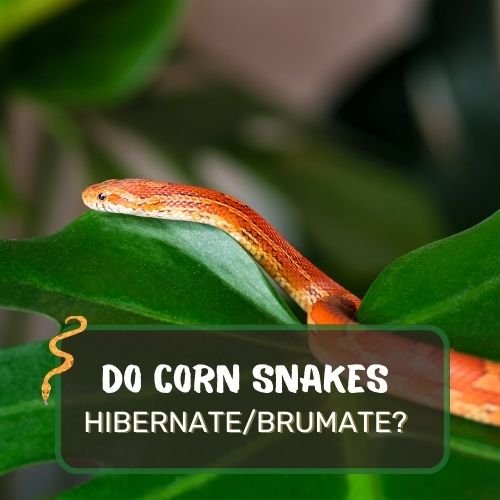
“Do corn snakes hibernate?” is a question that has intrigued reptile enthusiasts and curious minds alike.
In this comprehensive article, we delve deep into the world of corn snakes and their unique adaptive behaviors during the colder months.
We’ve explored various factors, from the role of temperature and light to the subtle signs indicating a snake’s transition into its dormant state.
By the end of this read, you’ll not only have a clear answer to the question but also a broader understanding of corn snake behavior and care.
Whether you’re a seasoned snake owner or someone simply captivated by these mesmerizing creatures, this article promises insights that will both inform and fascinate you.
Table of Contents
Do Corn Snakes Hibernate? (Short Answer)
In the traditional sense of the term “hibernation,” no, corn snakes do not hibernate. Instead, they undergo a process called “brumation.” Brumation is similar to hibernation in that the snake becomes less active and reduces its metabolic rate. However, it’s not a deep sleep like hibernation. During brumation, corn snakes will retreat to cooler, sheltered spots and significantly reduce their activity levels, but they may still move around occasionally. This period of dormancy is triggered by shorter daylight hours and cooler temperatures, preparing the snake for the breeding season that follows.
What is Hibernation?
Definition and purpose of hibernation
Hibernation is a fascinating phenomenon observed in many animals. It’s like nature’s version of hitting the “pause” button.

During hibernation, animals enter a state of prolonged inactivity, conserving energy by significantly reducing their metabolic rate. This is especially crucial for creatures living in areas with harsh winters, where food is scarce.
By hibernating, they can survive the cold months without the need for constant feeding.
But why do animals hibernate? Imagine you’re binge-watching your favorite show, and suddenly there’s a power outage. You’d probably wish you had a backup battery to keep the TV running.
In a way, hibernation is an animal’s backup plan, allowing them to survive on stored energy when resources are limited.
Difference between hibernation, brumation, and torpor
Now, here’s where things get interesting. Not all “hibernation” is created equal. In fact, what many reptiles, including our spotlighted corn snake, undergo isn’t technically hibernation. It’s called brumation.
Brumation is similar to hibernation in that the animal becomes less active and eats less. However, the key difference is in the triggers and metabolic processes.
While hibernation is primarily a response to cold temperatures and reduced food availability, brumation is more about the light cycle. As days get shorter, reptiles sense the change and prepare for brumation.
Then there’s torpor, a short-term version of hibernation. Think of it as a power nap for animals.
It can last anywhere from a few hours to several days, allowing animals to conserve energy during brief periods of cold or food scarcity.
So, circling back to our original question: Do corn snakes hibernate? Not exactly. They brumate.
But whether it’s hibernation, brumation, or torpor, these natural processes are a testament to the incredible adaptability of animals in the face of environmental challenges.
Why Do Corn Snakes Brumate?
The role of temperature and light in triggering brumation
Nature has its own rhythm, and corn snakes, like many creatures, dance to its tune. Two primary factors cue the onset of brumation in corn snakes: temperature and light.
As the days grow shorter and temperatures drop, corn snakes receive nature’s memo that it’s time to slow things down.
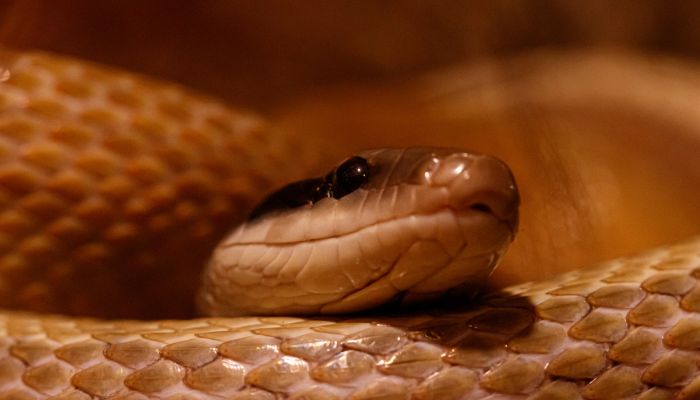
The decreasing daylight hours signal to the snake’s internal clock that winter is approaching. This is crucial because, in the wild, the colder months mean fewer prey animals are active.
At the same time, cooler temperatures directly affect these cold-blooded reptiles. Unlike us warm-blooded humans who maintain a constant body temperature, a corn snake’s body temperature is influenced by its environment.
As the environment cools, so does the snake, leading to a decrease in its metabolic rate.
Benefits of brumation for corn snakes
Brumation isn’t just a quirky snake behavior; it serves a purpose. By entering this state of reduced activity, corn snakes conserve energy. They don’t need to eat as much — a good thing since food is harder to come by in colder months.
Additionally, brumation prepares corn snakes for the upcoming breeding season. After this period of rest, males are more virile, and females are better prepared for gestation. It’s nature’s way of ensuring the continuation of the species.
Signs Your Corn Snake is Going into Brumation
Reduced activity and appetite
One of the first signs of an impending brumation is a noticeable reduction in your corn snake’s activity. That lively, curious creature that used to explore its enclosure might now seem a bit…lazy.
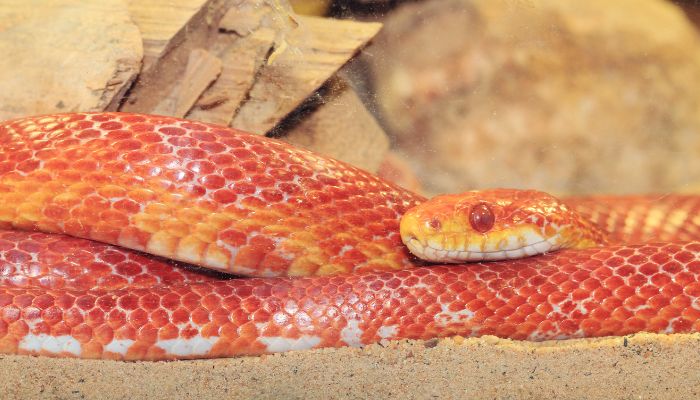
Along with this, you might observe that your snake isn’t as interested in food. Don’t be alarmed if it refuses meals; this is a natural part of the brumation process.
Preference for cooler areas of the enclosure
As brumation approaches, your corn snake will instinctively seek out the cooler spots in its enclosure. It’s mimicking the natural behavior of finding a safe, cool place to brumate, like burrows or crevices in the wild.
If you notice your snake spending more time in the shaded or cooler parts of its habitat, brumation might be on the horizon.
Changes in color or appearance
Some snake owners have reported subtle changes in their pet’s color or appearance as brumation nears. The snake’s colors might appear slightly duller, or its skin may seem less lustrous.
This isn’t a cause for concern but rather another sign of the snake’s preparation for its winter rest. However, always ensure that these changes aren’t signs of health issues by keeping a close eye on your pet and consulting with a vet if needed.
How to Care for a Brumating Corn Snake
Caring for a brumating corn snake might seem daunting, but with a bit of knowledge and attention to detail, you can ensure your slithering friend stays healthy during this dormant period.
Ideal temperatures and lighting conditions
While corn snakes are brumating, it’s essential to maintain a cooler, but not cold, temperature in their enclosure. A range of 50-60°F (10-15°C) is generally recommended.
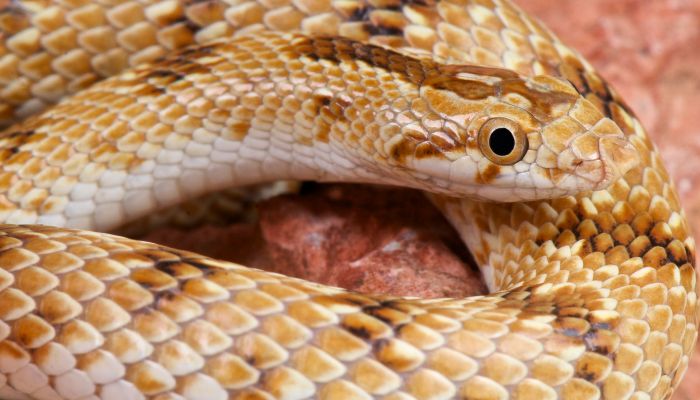
This mimics the cooler underground environments they would naturally seek out in the wild. However, avoid temperatures that drop too low, as this can be harmful.
Lighting plays a pivotal role too. Since shorter daylight hours trigger brumation, it’s a good idea to reduce the amount of light your snake receives.
If you’re using artificial lighting, gradually decrease the number of hours it’s on each day. This gradual transition helps mimic the natural change in seasons.
Feeding considerations before, during, and after brumation
Before brumation kicks in, it’s crucial to ensure your snake has emptied its digestive system. A meal left undigested can rot, leading to potential health issues.
So, stop feeding your snake about two weeks before you expect brumation to start, giving it ample time to digest any remaining food.
During brumation, your snake’s appetite will be minimal, if not entirely absent. It’s okay not to feed them during this period. Their slowed metabolism means they’re using energy at a much-reduced rate.
Once you notice signs of your snake coming out of brumation, like increased activity, you can reintroduce food. Start with smaller meals to ease them back into their regular feeding routine.
Monitoring health and signs of distress
While brumation is a natural process, it’s essential to keep an eye on your snake’s health. Regularly check for signs of distress, like visible injuries, difficulty breathing, or unusual lumps.
A brumating snake should breathe slowly but regularly. Rapid or labored breathing can be a sign of respiratory issues.
Common Concerns During Brumation
Dehydration risks and how to mitigate them
Even in brumation, snakes can become dehydrated. Ensure there’s always fresh water available in the enclosure. While they might not drink as often, having the option is vital.
Occasionally, you might notice your snake soaking in the water dish, which can help with hydration.
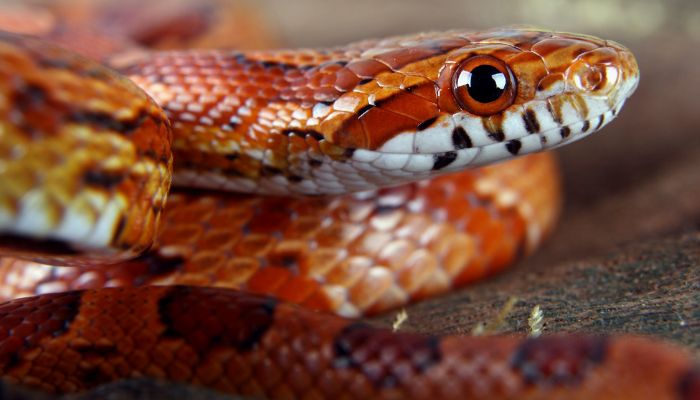
Distinguishing between brumation and illness
It’s a common concern: is my snake brumating or is it sick? While both scenarios involve reduced activity, there are key differences. A brumating snake will still move occasionally and show interest in its surroundings, albeit reduced.
On the other hand, a sick snake might display other symptoms like refusal to eat even after brumation should have ended, irregular breathing, or visible injuries.
When to consult a veterinarian
If you’re ever in doubt about your snake’s health, it’s always a good idea to consult with a reptile veterinarian.
They can provide guidance tailored to your specific situation and ensure your corn snake remains healthy, whether it’s brumating or facing a health concern.
Preparing Your Corn Snake for Brumation
As winter approaches and you notice the telltale signs of brumation in your corn snake, there are steps you can take to ensure this period goes smoothly for your slithery companion.
Adjusting light and temperature gradually
Just as nature doesn’t switch seasons overnight, you shouldn’t make abrupt changes to your snake’s environment. Begin by gradually reducing the hours of light your snake receives each day.
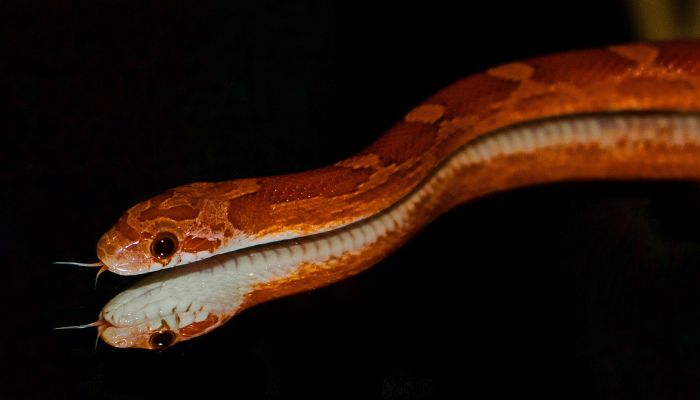
If you’re using a heat source, start dialing it back to reach the cooler brumation temperatures. This slow transition helps your snake adjust without stress.
Ensuring a safe and comfortable brumation spot
In the wild, corn snakes would seek out burrows or other hidden spots to brumate. In captivity, providing a hide or shelter in the cooler part of their enclosure can mimic this environment.
This gives them a sense of security and protection during their dormant period.
The importance of a pre-brumation health check
Before your snake enters brumation, it’s a good idea to give them a thorough health check. Look for any signs of injury, illness, or parasites. A healthy snake will handle brumation much better than one already under stress.
Post-Brumation Care
When spring’s warmth starts to creep in, and your corn snake begins to stir from its winter rest, it’s time to shift gears and help them transition back to their active state.
Gradually reintroducing light and warmth
Just as you reduced light and warmth gradually for brumation, you’ll want to reintroduce them slowly. Increase the hours of light each day and adjust the temperature settings to bring the enclosure back to its usual warmth.
This gentle shift helps your snake adjust without causing undue stress.
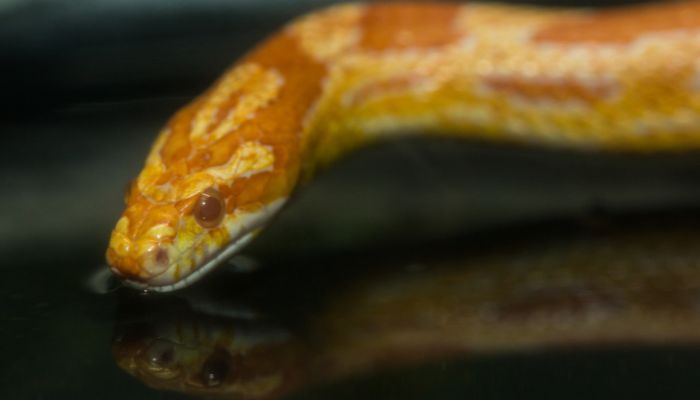
Resuming feeding and monitoring appetite
Your snake’s metabolism will start to ramp up as they come out of brumation. Begin by offering smaller meals, watching closely to see if they’re ready to eat.
It might take a bit of time for their appetite to return fully, so be patient and avoid overfeeding.
Health checks and potential post-brumation issues
After brumation, it’s essential to give your snake another thorough health check. Ensure they’re hydrated, check for any signs of illness or injury, and monitor their behavior.
If you notice anything unusual, like refusal to eat for an extended period or signs of respiratory issues, consult with a reptile veterinarian.
With the right care, your corn snake will be ready to embrace the active months ahead, healthy and full of life.
Conclusion
The world of corn snakes is as fascinating as it is intricate. These creatures, with their mesmerizing patterns and curious behaviors, have a unique way of adapting to the changing seasons.
Brumation, their version of hibernation, is a testament to nature’s incredible design, allowing them to conserve energy, prepare for breeding, and navigate the challenges of colder months.
As snake enthusiasts or pet owners, understanding this process is crucial. It not only ensures the well-being of our scaly friends but deepens our appreciation for the delicate balance of life.
So, the next time winter approaches and your corn snake begins its annual retreat, you’ll know it’s just nature’s rhythm at play, a dance as old as time.
FAQ
How do I know if my corn snake is hibernating?
Your corn snake isn’t truly “hibernating” but brumating. Signs include reduced activity, a decreased appetite, and a preference for cooler spots in their enclosure. Their colors might also appear slightly duller.
How do corn snakes hibernate?
They undergo brumation, a period of reduced activity and metabolism, in response to shorter daylight hours and cooler temperatures.
Do snakes move when they hibernate?
During brumation, snakes, including corn snakes, will move, but very infrequently. They might change positions within their hiding spot or come out occasionally for water.
What happens if a corn snake gets cold?
Corn snakes, being ectothermic, rely on external sources for body heat. If they get too cold, their metabolic processes can slow down dangerously, making them susceptible to illnesses. It’s crucial to maintain a safe temperature range during brumation.
When do corn snakes brumate?
The brumation period typically begins in the late fall and can last until early spring, depending on environmental cues like temperature and light.

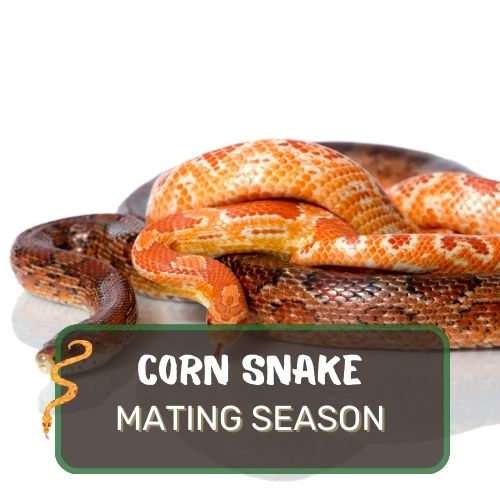
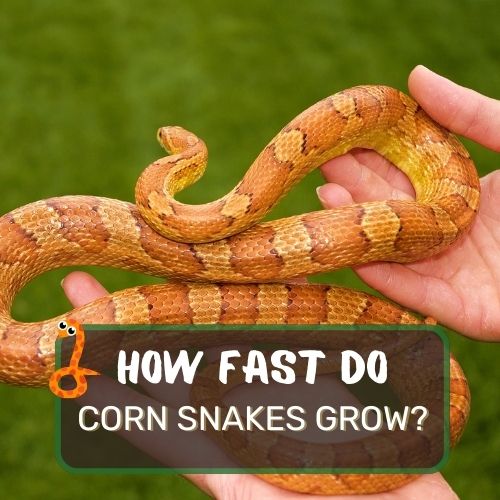
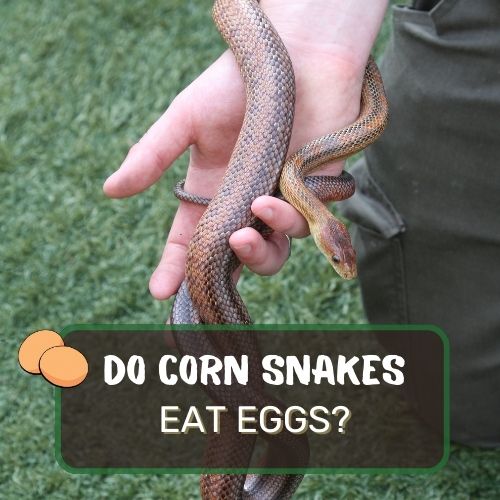
0 Comments